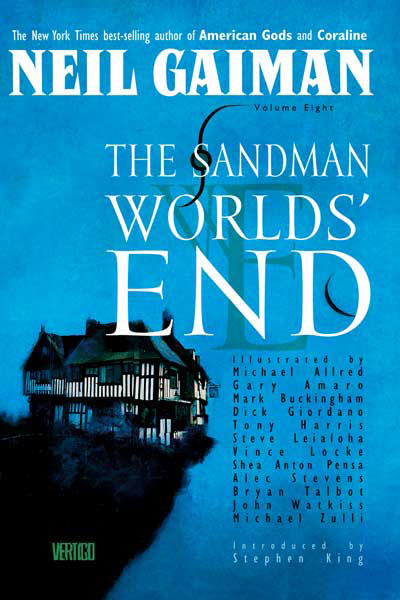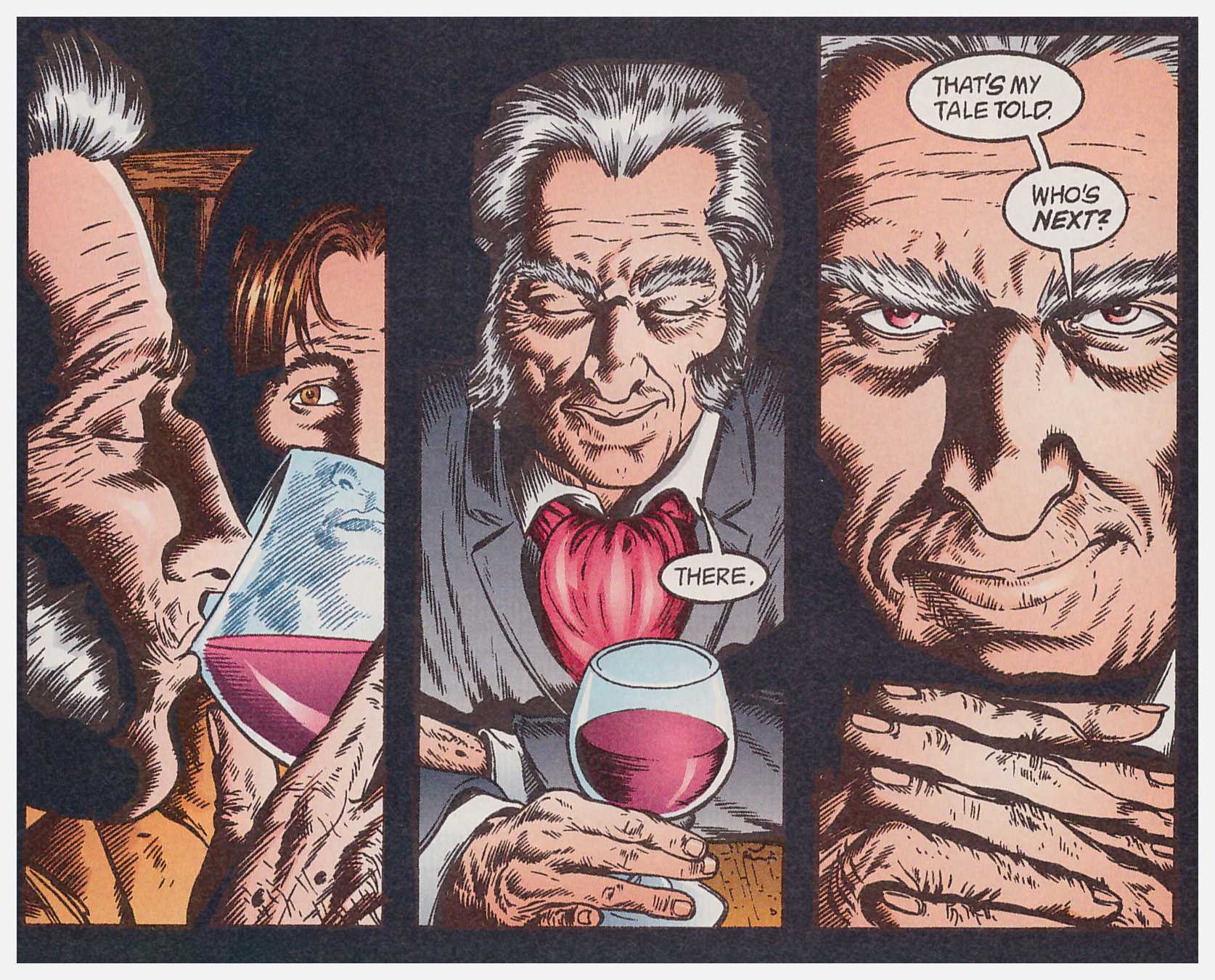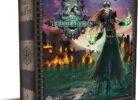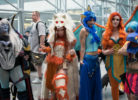Eight years ago, Stephen Segal, then creative director at the legendary Weird Tales magazine, asked if he could use some modest writings I had been doing on Neil Gaiman’s Sandman for a 20th anniversary retrospective he was putting together. Naturally, I said yes. Sadly, the series was lost in a website revamp. Not wanting it to disappear into the ether, I’m now presenting it on my site in 11 parts (alas, without the benefit of Stephen’s editing; these are pre-publication versions). Hope you enjoy.
Recurring Dream: An Anniversary Re-reading of Neil Gaiman’s Sandman
Part 9 of 11, World’s End
Originally published on the Weird Tales website, January 2009
 Stories, storytelling and storytellers. What is dreaming but an elaborate, unconscious means of storytelling, one in which we are the storyteller weaving tales we could never imagine while conscious? Stories and the people who tell them have been a recurrent theme in Sandman, a vital part of the essence of what Neil Gaiman constructed. World’s End, the last of three short story collections, takes the idea of telling stories to its logical extreme.
Stories, storytelling and storytellers. What is dreaming but an elaborate, unconscious means of storytelling, one in which we are the storyteller weaving tales we could never imagine while conscious? Stories and the people who tell them have been a recurrent theme in Sandman, a vital part of the essence of what Neil Gaiman constructed. World’s End, the last of three short story collections, takes the idea of telling stories to its logical extreme.
Unlike the prior two short story collections (Dream Country and Fables and Reflections), this one uses a framing device to hold the stories together as if they are all one narrative. World’s End deposits us in an inn of the same name, a place that exists outside of time and reality. A pair of ordinary people find themselves eating and drinking with all manner of strange beings – fairy and centaurs and others – and to pass time they tell one another stories. So essentially, we’ve got stories within a story.
If he didn’t do it so damn well, I’d almost be inclined to accuse Gaiman of showing off here. See, he’s not content to stop with mere stories within stories, or even stories within stories within stories. No, at times he takes it to an extreme, nesting a stack of stories within one another almost, but never quite, to the point of breaking. Shades of One Thousand and One Nights (better known as Arabian Nights) and almost certainly one of his influences, seeing as “Ramadan” was completed shortly before these narratives. At one point we’ve got a guy in the inn telling a story about some folks conducting a funeral, who in turn tell a story about a visit from Destruction of the Endless, who himself tells a story about the creation of a city. A story within a story within a story within a story. Throughout this collection tales are nestled inside other tales, brief dramas curled up warm and cozy under the wings of their larger mother story, and all of them set inside a larger tale that serves as a harbinger of what is to come in the tragic The Kindly Ones.
But the thing is – and this is what impressed me so much, especially now that I’m more attuned to examining how stories are put together – it’s not just showing off. These are good stories. Stories worth telling. Stories with thematic and narrative elements that play off one another. Some are old stories, tales far more ancient than Gaiman or comic books. He’s never been shy about wearing his inspirations and influences on his sleeve, though, and nearly every element he appropriates from other sources he makes his own. “Hob’s Leviathon,” for instance, is an age old tale about a woman posing as a man in order to serve on a sailing vessel, and seeing a massive serpent while out at sea. To make it his own, Giaman weaves Gadling, Dream’s undying human friend from early in the series, into the story, and also uses the fable to make points about truth, secrets, identity and desire.
The tales here aren’t as consistently good as the previous two collections. “Cluracan’s Tale” is an unmemorable adventure featuring one of Sandman’s least enjoyable characters, and “The Golden Boy” is a bizarre attempt to make a morality play out of an ill-conceived, short-lived 1970s comic series called Prez, about an idealistic teen who becomes President of the United States. Yet it’s hard to complain when the same collection gives us the wonder of a dreaming city, a bizarre look at a city of gaunt funeral directors, and a dozen other little gems.
The thing that makes World’s End most worth reading is the moving finish to it all. One did not have to be paying close attention during Brief Lives to know that Dream’s story would not have a happy ending. Brief Lives was merely the dark horizon before the storm; a faint rumble before the lightning and thunder begins. Here, the final story is devoted to the Sandman story itself when the sky is filled with a vision, a haunting, moving glimpse at what is to come for Dream. (As we learn later, World’s End takes place concurrently with The Kindly Ones, and climaxes during The Wake.)
There is something more subtle at work here. Whether intended or not, World’s End is something of an extended commentary of the future of the series and its characters. Its stories are about endings and new beginnings; deaths and rebirths; about being ensnared and coming away a different person. Taken as a whole, these serve as a companion piece to the themes of Brief Lives, The Kindly Ones and The Wake, adding to the already rich fabric of Gaiman’s world.
Of Sandman’s short story collections, World’s End is the one about which I had the fondest memories. I now remember why. The framing device feels like a fable as old as the hills (it is) and the stories are consistently inventive, but more than that, World’s End a celebration of storytelling. And what better place to celebrate storytelling than in the pages of Sandman, which itself has been a celebration of the form?







